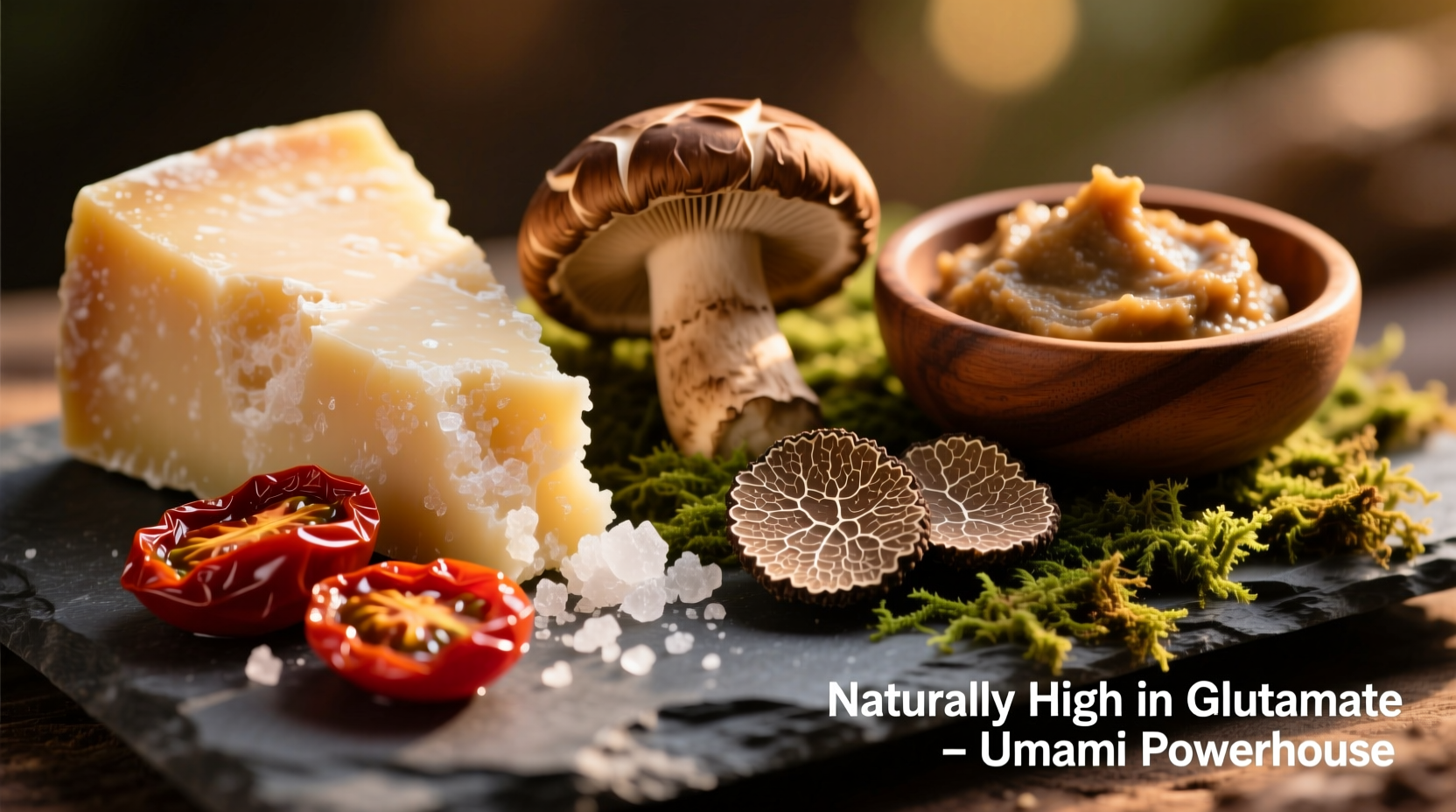Curious about which foods contain MSG but tired of sensationalized claims? You've landed in the right place. This comprehensive guide cuts through the misinformation to deliver science-backed facts about monosodium glutamate in your food. Whether you're managing dietary restrictions, reading labels more carefully, or simply want to understand the reality behind this misunderstood flavor enhancer, you'll leave with practical knowledge you can use immediately.
Understanding MSG: Separating Science from Sensationalism
Monosodium glutamate (MSG) is simply the sodium salt of glutamic acid, a naturally occurring amino acid found throughout nature. Despite persistent myths, MSG isn't some mysterious chemical concoction—it's a purified form of a compound that exists abundantly in many whole foods.
Glutamate serves as one of our five basic tastes—umami—which translates to "pleasant savory taste" in Japanese. This fifth taste works alongside sweet, sour, salty, and bitter to create complex flavor profiles in food.
| Year | Key Development | Scientific Consensus Shift |
|---|---|---|
| 1908 | Professor Kikunae Ikeda isolates glutamate from seaweed | Umami identified as fifth basic taste |
| 1968 | "Chinese Restaurant Syndrome" letter published | Unfounded connection between MSG and symptoms |
| 1995 | FDA classifies MSG as "generally recognized as safe" | Official recognition of safety |
| 2017 | European Food Safety Authority confirms safe consumption levels | Modern scientific consensus solidified |
According to the U.S. Food and Drug Administration, MSG has been classified as "generally recognized as safe" since 1959. The European Food Safety Authority recently confirmed safe consumption levels at 30mg per kilogram of body weight per day—far above typical consumption levels.
Foods Naturally Rich in Glutamate
Before we discuss added MSG, it's crucial to understand that glutamate occurs naturally in many foods. In fact, some of the most umami-rich foods contain more glutamate naturally than foods with added MSG.
Fermented Foods
Fermentation dramatically increases free glutamate levels through enzymatic breakdown:
- Soy sauce: Contains approximately 1,630mg/100g of free glutamate
- Fish sauce: Ranges from 930-1,300mg/100g
- Miso paste: Approximately 1,200mg/100g in aged varieties
- Kimchi: Levels increase significantly during fermentation
Aged Cheeses
The aging process breaks down proteins into free glutamate:
- Parmesan cheese: Contains about 1,200mg/100g—the highest of any natural food
- Roquefort: Approximately 1,080mg/100g
- Gouda: Around 790mg/100g in aged varieties
- Cheddar: About 130mg/100g in mild varieties, increasing with age
Vegetables and Fungi
Certain plant-based foods naturally contain significant glutamate:
- Tomatoes: Fresh tomatoes contain about 140mg/100g, while tomato paste has approximately 140-220mg/100g
- Mushrooms: Shiitake mushrooms contain about 180mg/100g
- Seaweed (kombu): Contains approximately 1,000mg/100g—this is where MSG was first isolated
- Green peas: About 100mg/100g

Common Processed Foods With Added MSG
While many whole foods contain natural glutamate, certain processed foods include added MSG as a flavor enhancer. Here's where you're most likely to encounter it:
Asian-Style Prepared Foods
Though often misunderstood, MSG use in authentic Asian cuisine is actually less common than many believe. However, it does appear in:
- Instant ramen noodles (nearly all brands)
- Bottled stir-fry sauces
- Pre-made dumpling fillings
- Certain brands of teriyaki sauce
Snack Foods
MSG enhances the savory flavor profile of many popular snacks:
- Potato chips (particularly barbecue and sour cream flavors)
- Pretzels and cheese crackers
- Beef jerky and meat snacks
- Flavored popcorn
Processed Meats and Canned Goods
MSG helps maintain flavor consistency in mass-produced items:
- Canned soups and broths
- Processed sausages and deli meats
- Canned stews and chili
- Seasoned rice mixes
How to Identify MSG on Food Labels
MSG can appear under various names on ingredient lists. Here's what to look for when examining food labels:
Direct MSG References
- Monosodium glutamate
- MSG
- Sodium glutamate
Ingredients That Often Contain Hidden MSG
- Hydrolyzed vegetable protein
- Autolyzed yeast
- Yeast extract
- Glutamic acid
- Soy extracts
- Calcium caseinate
- Sodium caseinate
- Textured protein
According to the World Health Organization, food manufacturers must list MSG specifically when it's added as a separate ingredient. However, ingredients that naturally contain glutamate (like hydrolyzed proteins) don't require special labeling.
Making Informed Choices About MSG Consumption
For most people, MSG presents no health concerns. However, certain individuals may experience sensitivity:
| Population | MSG Sensitivity Risk | Practical Guidance |
|---|---|---|
| General population | Very low | No restrictions needed; enjoy foods naturally containing glutamate |
| Asthma sufferers | Moderate (small subset) | Monitor personal reactions; may want to limit processed foods with added MSG |
| Migraine sufferers | Low to moderate | Some report triggers; consider keeping food diary to identify personal triggers |
| Infants | Very low | Natural glutamate in breast milk supports development; no need to avoid |
Research published in the Journal of Food Science confirms that the human body processes natural and added glutamate identically. Your digestive system cannot distinguish between the glutamate in a tomato and that in a seasoning packet.
If you're concerned about MSG intake, focus on whole, minimally processed foods. You'll naturally reduce exposure to added MSG while benefiting from the naturally occurring glutamate in nutrient-dense foods.
Practical Tips for MSG Awareness
Here are actionable steps you can take today:
- Read labels carefully: Look beyond just "MSG" to identify potential hidden sources
- Cook from scratch: This gives you complete control over ingredients
- Ask at restaurants: Many establishments will accommodate requests to prepare dishes without added MSG
- Keep a food diary: If you suspect sensitivity, track what you eat and any symptoms
- Focus on balance: Enjoy naturally umami-rich foods as part of a varied diet











 浙公网安备
33010002000092号
浙公网安备
33010002000092号 浙B2-20120091-4
浙B2-20120091-4